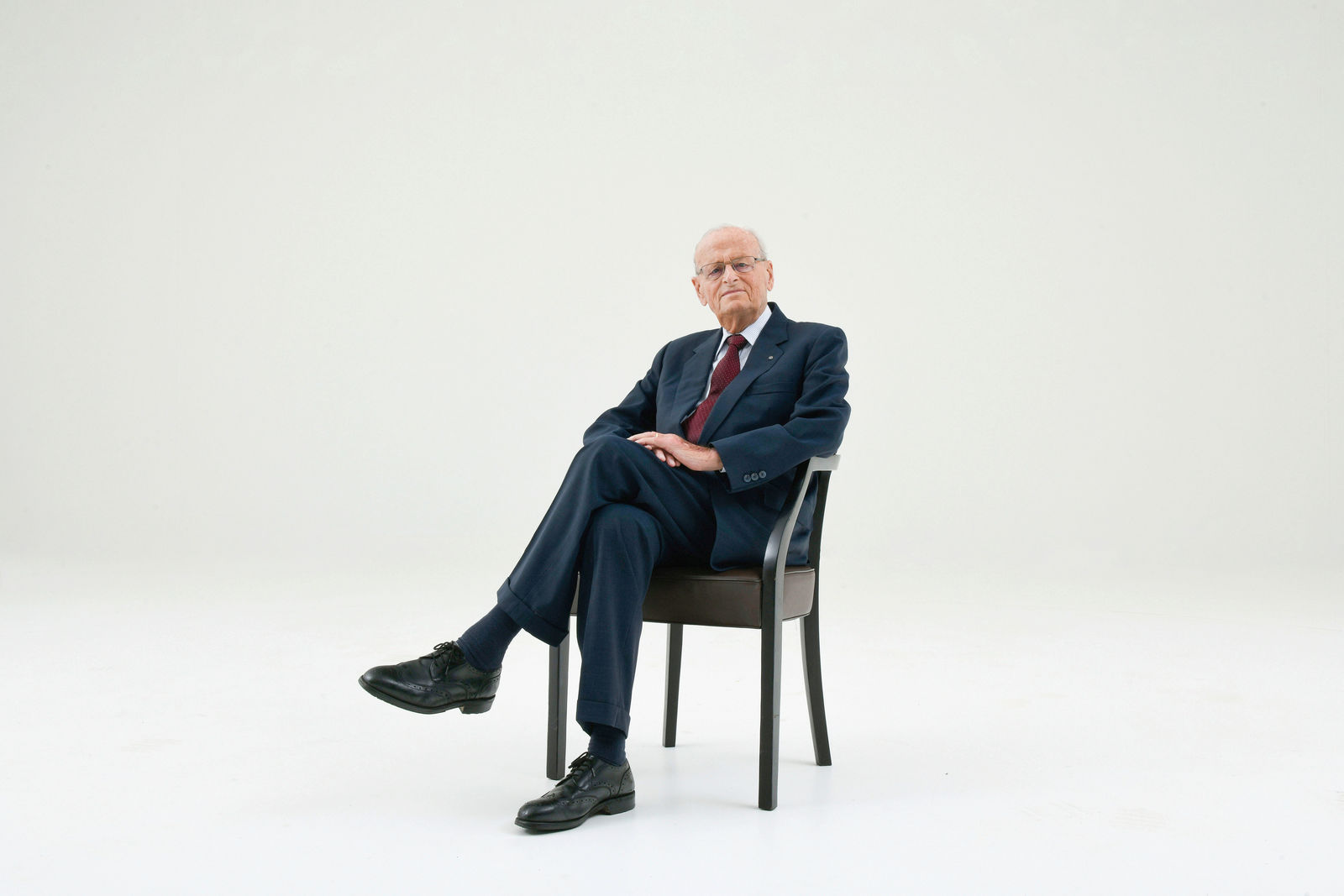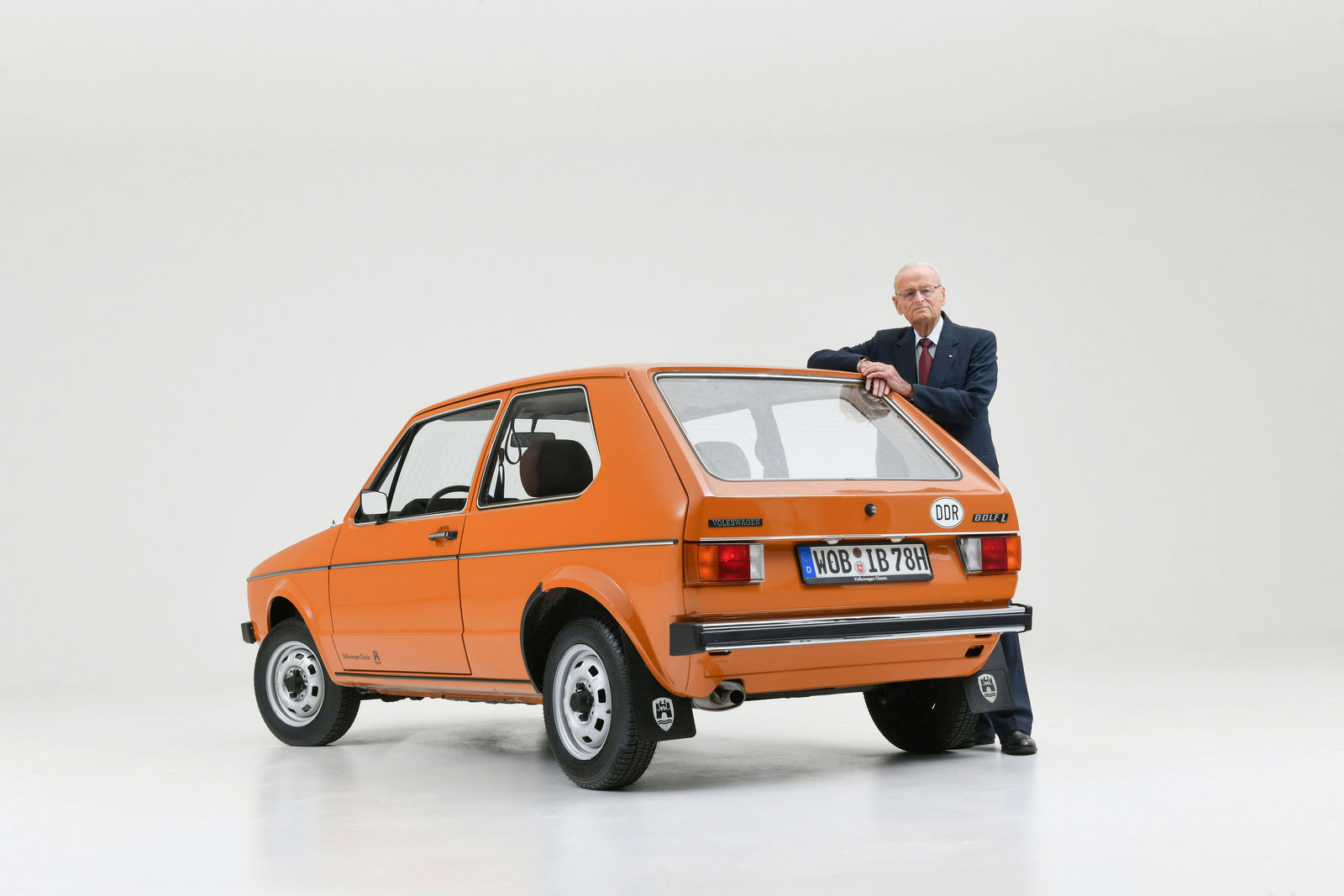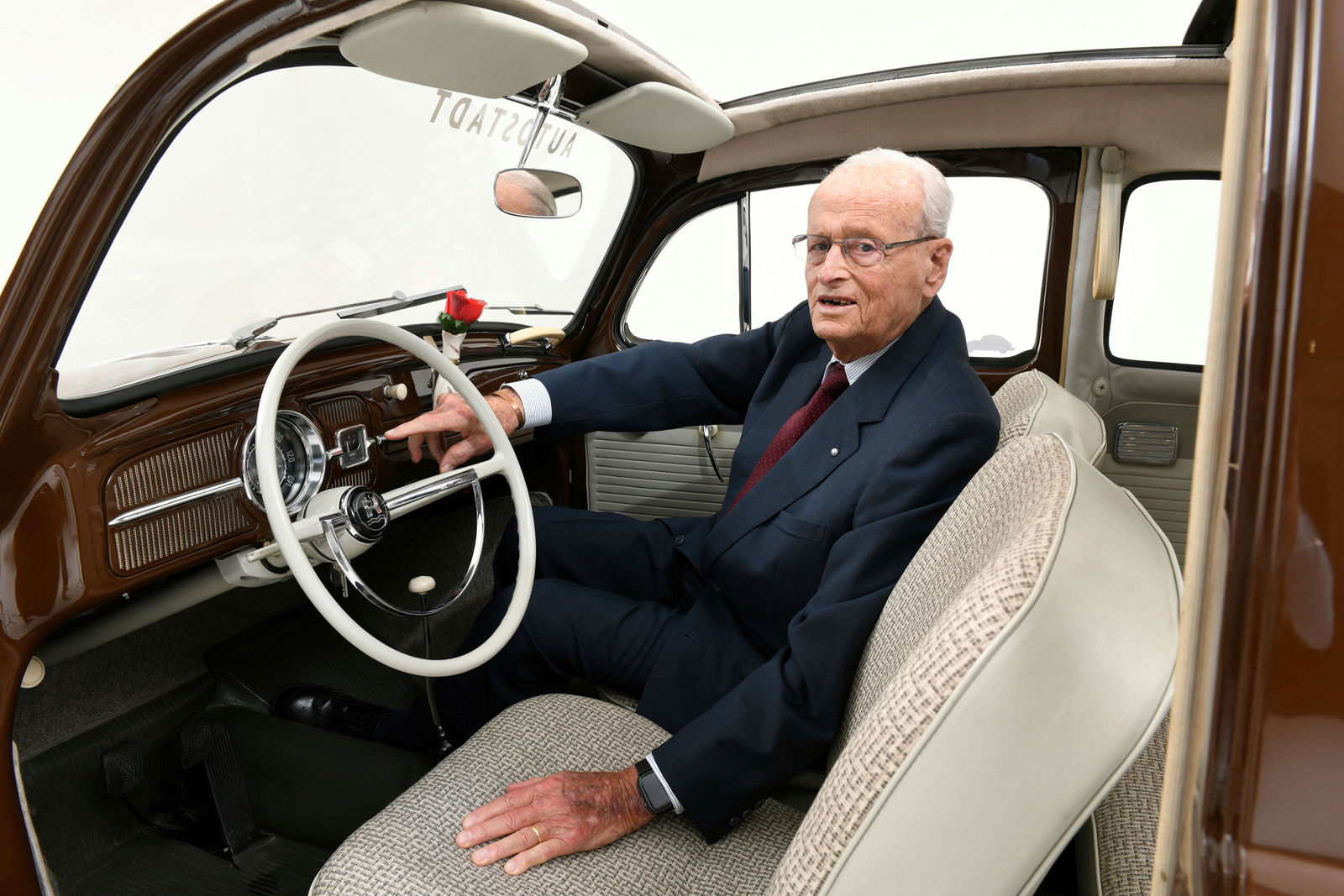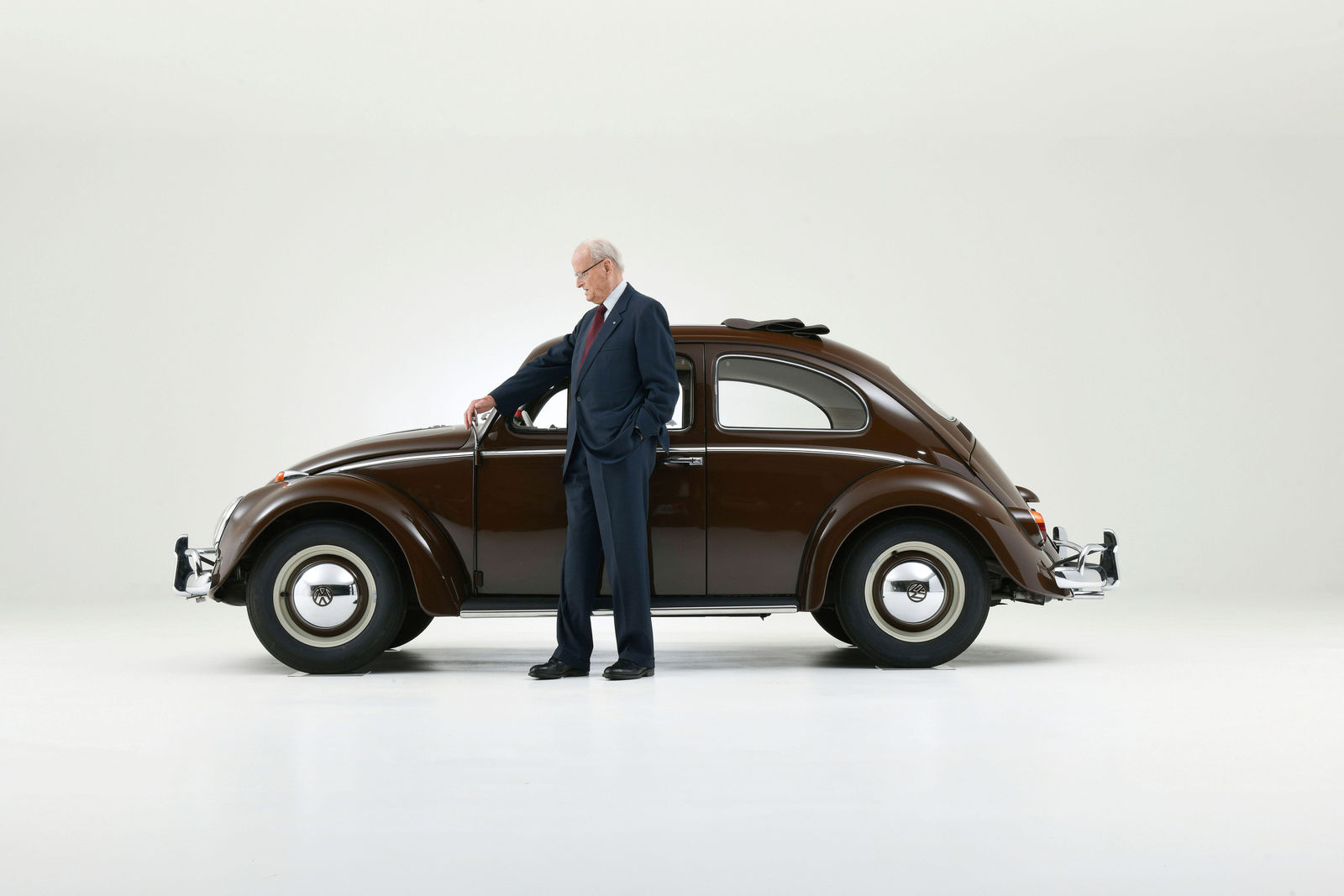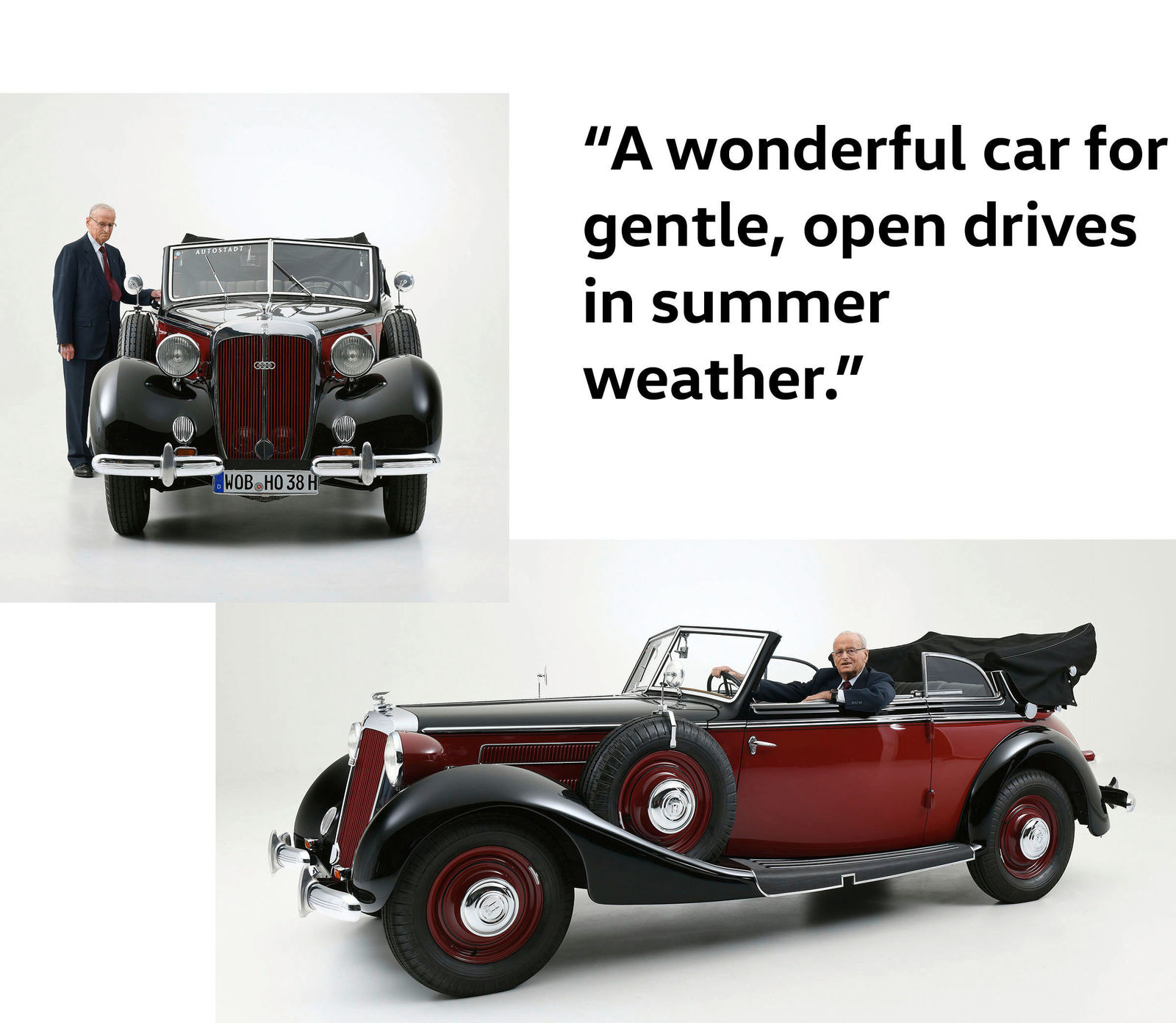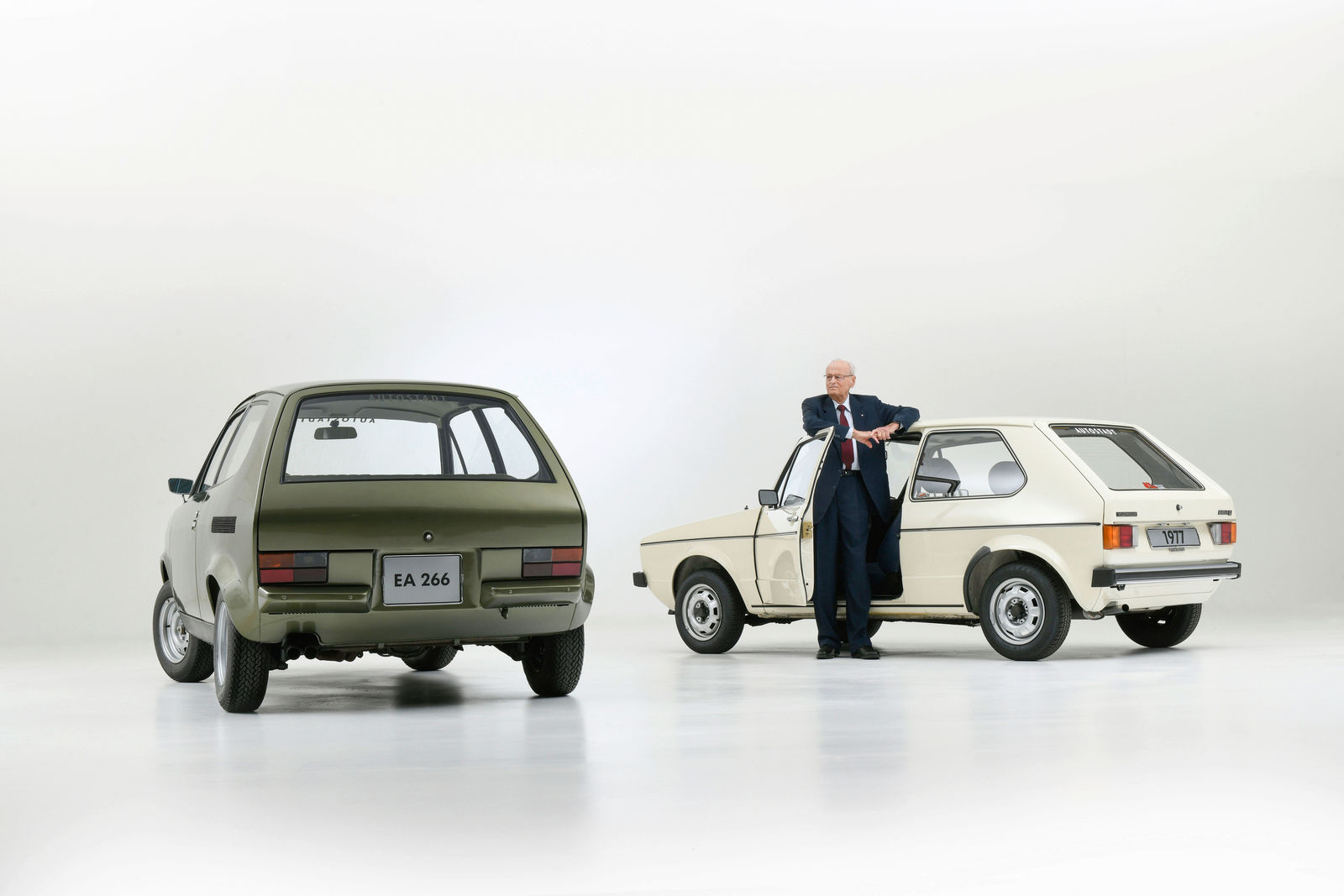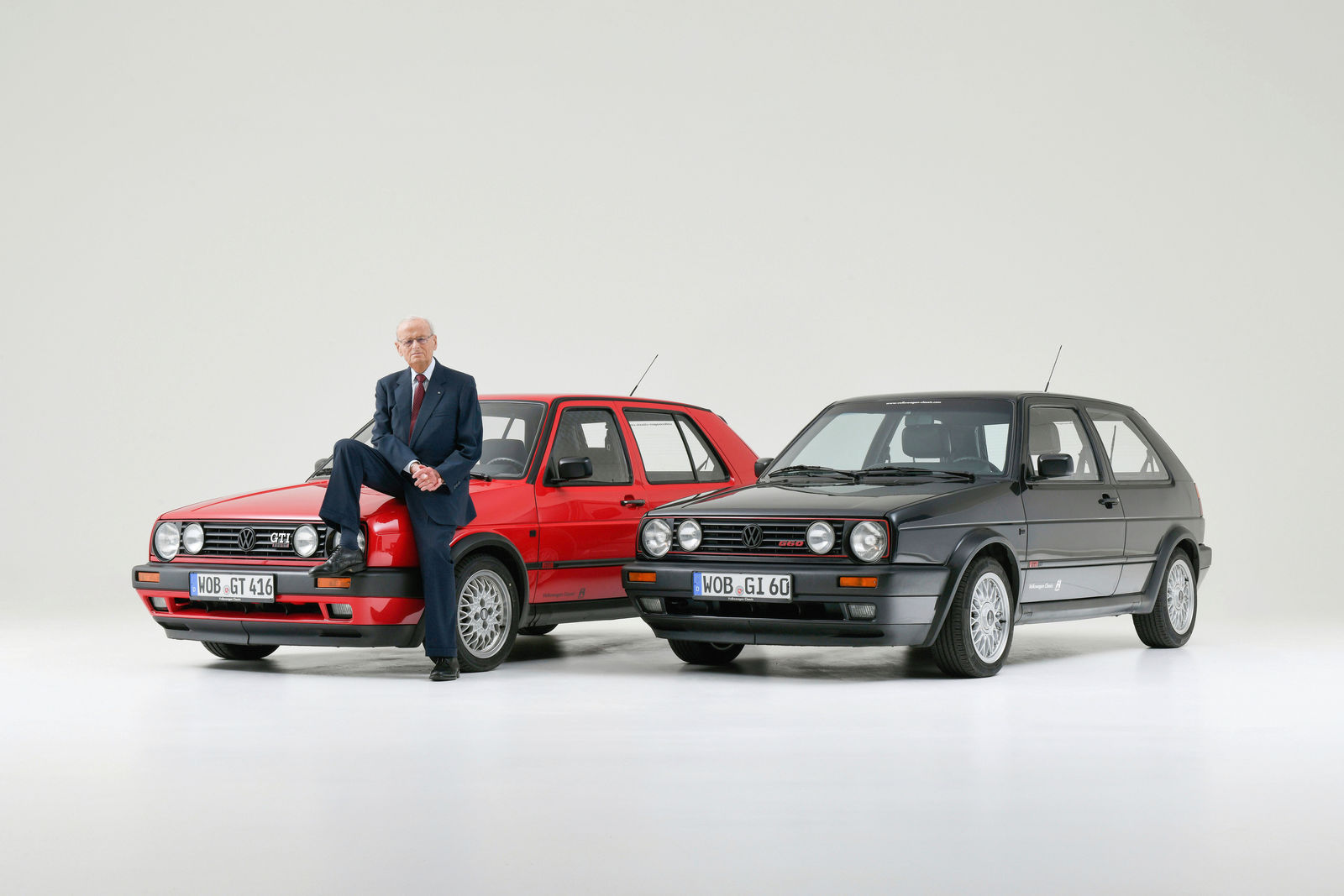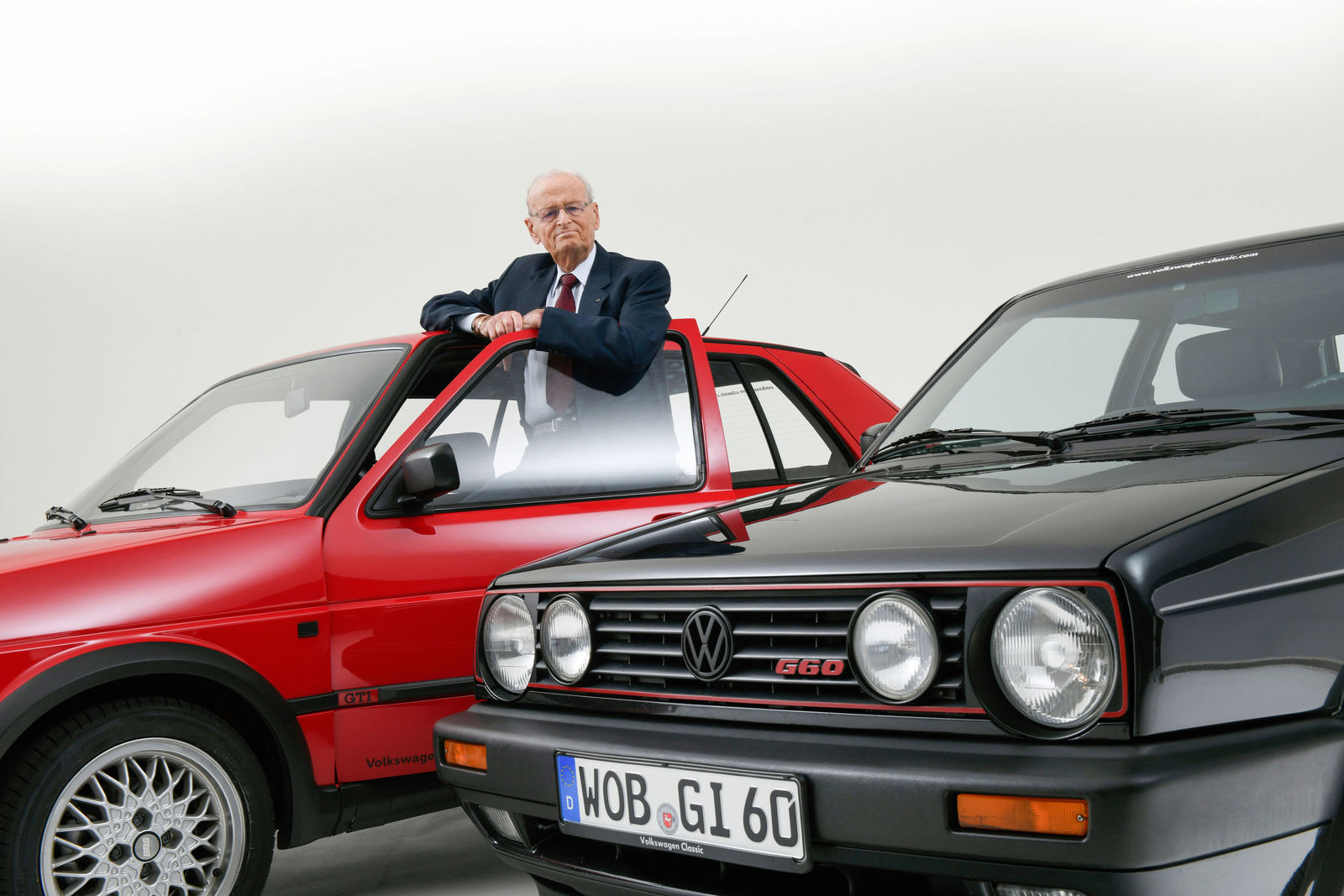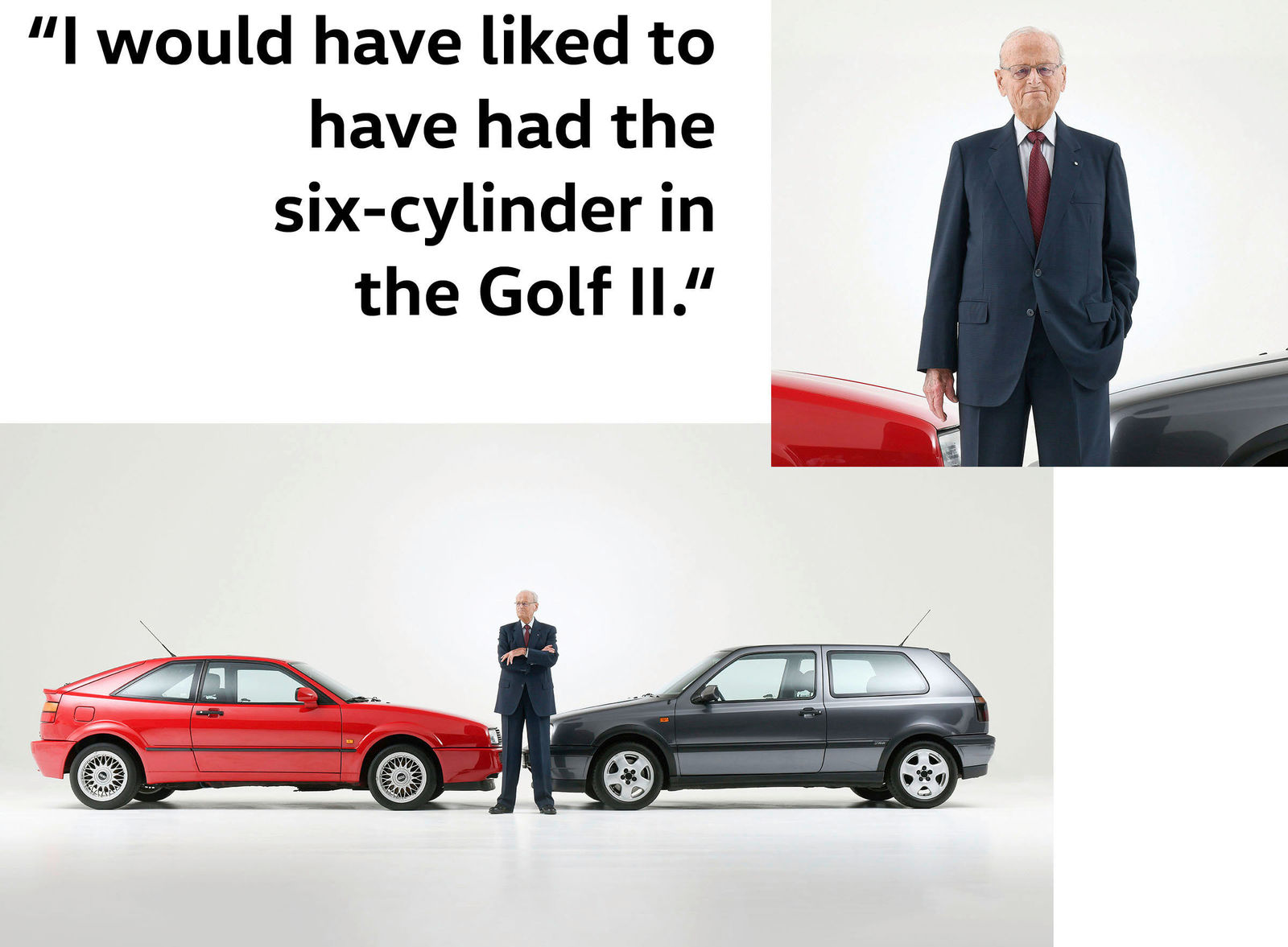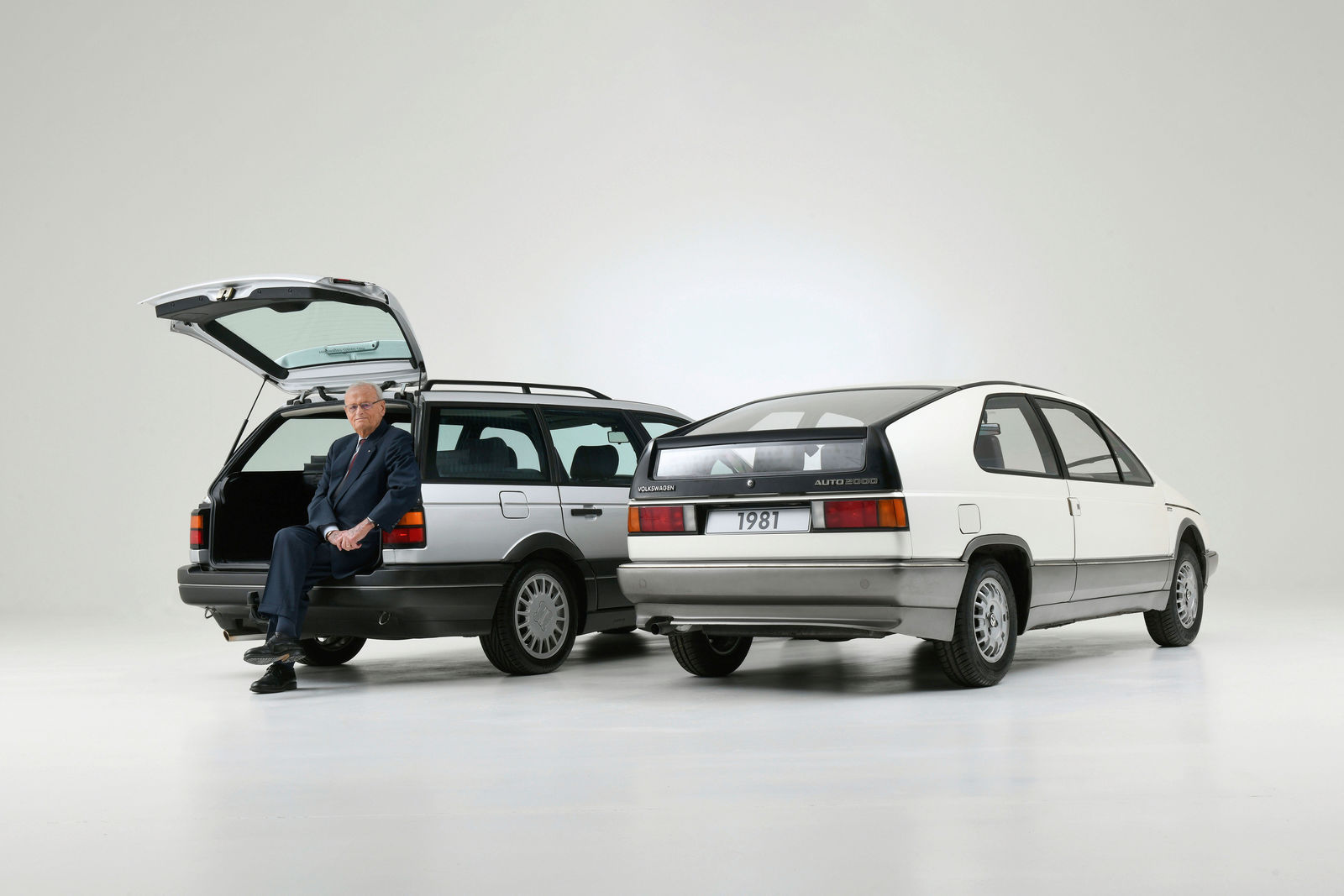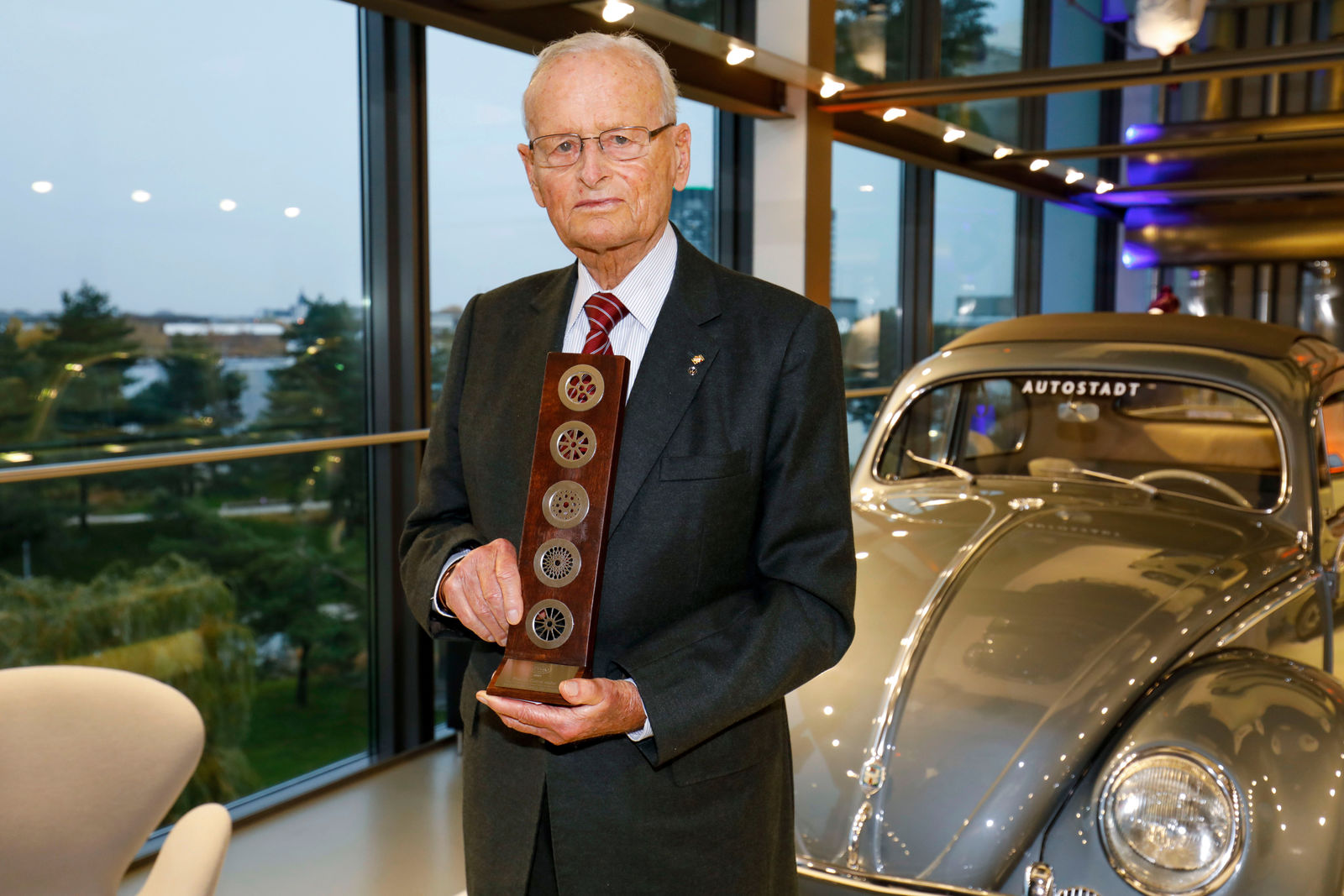Prof. Dr. Carl Horst Hahn does not really require any introduction. Anyone who says “Volkswagen” and has the history of the Group in mind immediately thinks of Carl H. Hahn alongside such Chairmen of the Board of Management as Heinrich Nordhoff, Rudolf Leiding and Ferdinand Piëch. Hahn’s name is inextricably linked with the globalisation of the Volkswagen Group. The global federation Fédération Internationale des Véhicules Anciens (FIVA) is now honouring the life’s work of Carl H. Hahn with the FIVA Heritage Hall of Fame Award.
FIVA Award: Lifetime achievement award for Carl Horst Hahn
Induction into the FIVA Heritage Hall of Fame represents the ultimate accolade for the life’s work of Prof. Dr. Carl Horst Hahn, the man responsible for the globalisation of Volkswagen and former Chairman of the Board of Management.
Anyone who says “Volkswagen” automatically thinks of Carl H. Hahn
The Chairman of the Board of Management of Volkswagen from 1982 to 1993 initiated the Group’s involvement in China that now plays such a key role, while also supporting commercial relations with the former GDR and driving the acquisition of the SEAT and ŠKODA brands and retention of the Audi brand. Born in Chemnitz, it was Hahn who immediately realised car manufacturing in Saxony for Volkswagen after the fall of the Iron Curtain. Volkswagen fans around the world also have “CHH”, as he is known for short, to thank for some epoch-making models that have long become classics and collectors’ items. From the Beetle to the Corrado.
Just a few days before he is due to receive his FIVA award in the AUTOSTADT in Wolfsburg, that is reason enough for Volkswagen to reunite Hahn with some of the most important cars from his time at the company.
First things first: it was as if Carl H. Hahn inherited his career with some notable stops along the way: his father Carl Hahn Senior was one of the founders of Auto Union AG in 1932 and was a senior manager for the DKW brand. The 95-year-old Hahn can still remember going for drives in his parents’ Horch 930 V Cabriolet. There is a structurally identical car in the ZeitHaus in the Wolfsburg AUTOSTADT and the reunion takes place in the warehouse and studio there. “A wonderful car for gentle, open drives in summer weather.”
From 1954 onwards, Carl H. Hahn assumed key positions at Volkswagen
In 1954, Carl H. Hahn became the assistant to the Volkswagen managing director Heinrich Nordhoff in Wolfsburg. Between 1959 and 1964, Hahn headed Volkswagen of America and was the driving force behind the success of the Beetle and the Transporter in the USA – alongside an advertising campaign from the Doyle Dane Bernbach (DDB) agency that still enjoys legendary status. “I was behind the initiative to install a fuel gauge in the Beetle in 1960,” says Hahn as he settles into the passenger seat of the 1961 Export model, pointing to the chromed instrument. “The previous fuel valve represented a false economy in the USA, which was already a very safety-conscious market. That was particularly the case for a car that was winning a place in the hearts of Americans, and had even become part of the family.”
However, there were risks inherent in the dependency on US exports for the Beetle, which Hahn recognised after returning from the USA in 1964 to take up a position as a member of the board. “We, and Nordhoff, realised that a heart attack for the Beetle would have meant the end for us.” Plans for a car to replace the Beetle took shape under Nordhoff’s successor Kurt Lotz, including the EA 266 with a mid-mounted underfloor engine. The Golf designed by Giorgetto Giugiaro appeared under the leadership of Rudolf Leiding. “This car not only represented a global breakthrough for the transversely mounted front engine, with front-wheel drive, but also created a whole new class: the ‘Golf class’!”
The Golf starts the “turnaround”
After differences of opinion about strategy, Hahn left Volkswagen AG in 1973, becoming Chairman of the Board at Continental Gummi-Werke AG in Hanover until 1982. However, the strong connection to Wolfsburg saw him return to assume the position of Chairman of the Board of Management at Volkswagen in 1982 after Toni Schmücker retired due to health concerns. Hahn broke new ground by entering into a spectacular joint venture agreement with China, featuring trial assembly of the new Santana model. “To this day, this model is referred to as ‘The Spirit of Motoring’ in China,” emphasises Hahn. The automotive effect of the Santana in China was similar to that which the Beetle had prompted in Europe.
16V, G-Lader and Corrado developed under Hahn
After leaving the position of Chairman of the Board of Management at the end of 1992, Carl H. Hahn moved onto the Volkswagen AG Supervisory Board, remaining a member until June 1997. He still makes the daily commute to his office in the heart of Wolfsburg, located in the buildings of the Kunstmuseum Wolfsburg that he initiated. He has been a board member for numerous international companies and is honorary chairman of the Group brands Audi, SEAT and ŠKODA.
What is he particularly proud of? “Everything you have heard in the past few hours,” he says, driving off in a brand-new ID.3. But not without a parting shot: “Electric driving is simply groundbreaking.“
There is nothing more to add. Just the FIVA Heritage Hall of Fame Award. Congratulations, “Mr. Volkswagen” Carl H. Hahn!
Media
